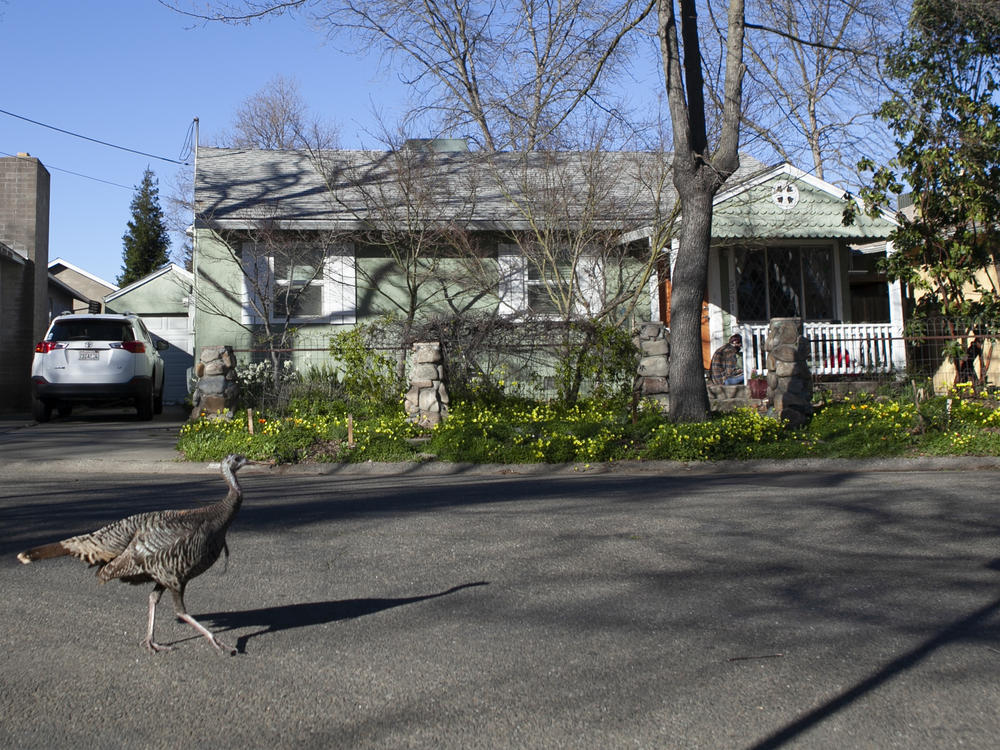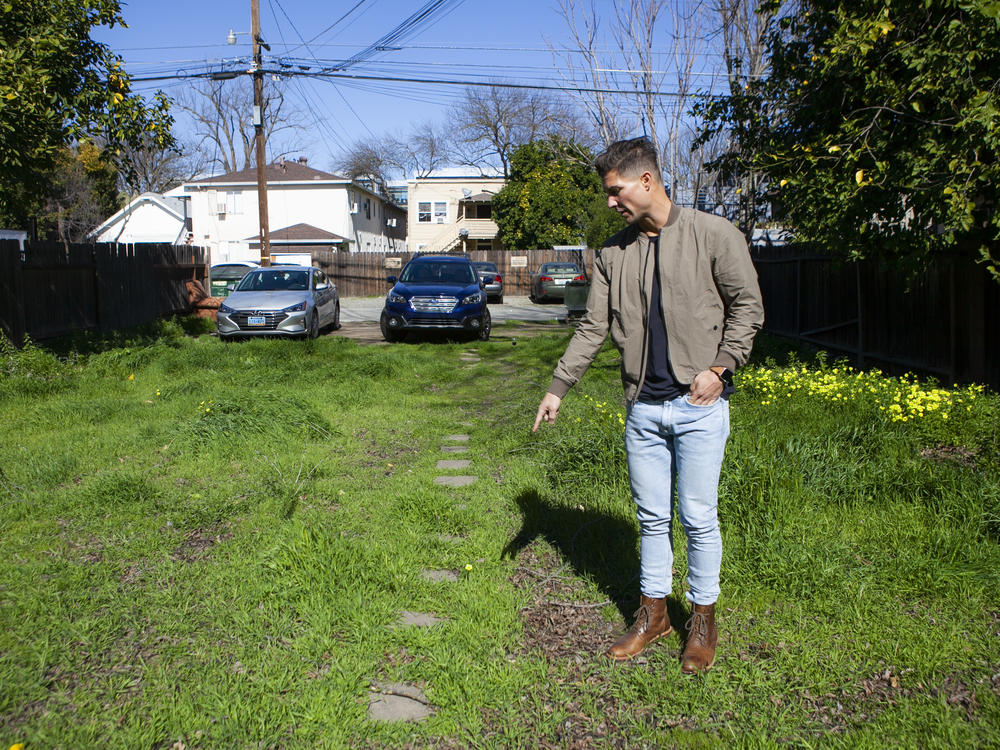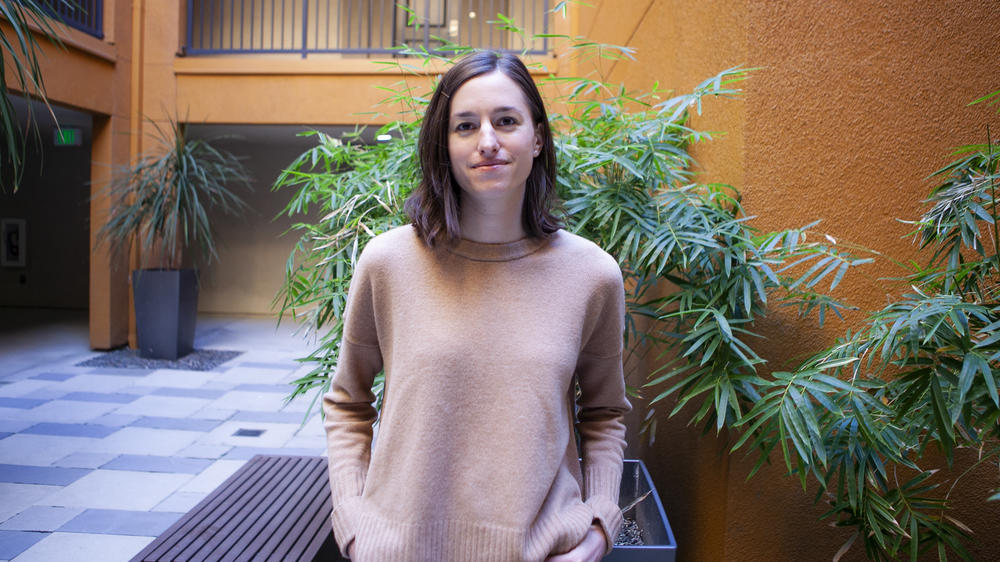Section Branding
Header Content
Facing Housing Crunch, California Cities Rethink Single-Family Neighborhoods
Primary Content
Real estate developer Kevin Khasigian stands in an empty lot near Sacramento's booming downtown. The sound of a jackhammer from a nearby construction site rattles behind him.
"We're not in any buildings, just an open field with grass and trash cans and parking," he says.
He points to the edges of a future, four-unit apartment building he has planned for the space. "Hopefully someday this will provide the opportunity for people to live in an area where they want to and that's really being underutilized."
This kind of development — small, multi-family buildings mixed in among single-family homes — could happen a lot more, thanks to a draft plan the Sacramento City Council approved in January. It allows fourplexes in all of the city's residential neighborhoods.
It's part of a growing movement of cities across California, and the country, to rethink traditional single-family neighborhoods as way to tackle high housing costs and redress decades of racial segregation in housing.
Officials in five Bay Area cities have announced plans to consider similar policies. In recent years, Minneapolis voted to allow triplexes throughout the city, and the state of Oregon approved fourplexes in all cities with a population of 10,000 or larger.
By restricting what can be built on each lot, it drives up the cost of housing, says David Garcia, a housing researcher at the University of California, Berkeley.
"There's a real need in high cost cities to explore where we can build new homes," he says. "And that includes looking at single family homes, which for decades have been sacrosanct."
In California, more than two-thirds of all residential land is dedicated solely to single-family homes. And a New York Times analysis found that those results are pretty consistent across the country, with an average of 75% of land dedicated to single-family homes in 10 large American cities.
But in Sacramento, not everyone is on board with the move to multi-unit zoning. Some residents fear the proposed plan could radically alter otherwise bucolic, single-family neighborhoods. Or, that it won't actually result in neighborhoods that are more affordable and inclusive.
Concerns about flipping
Maggie Coulter bought her house in Sacramento's Elmhurst neighborhood in the 1980s. She was drawn to the single-family neighborhood for its quiet streets and old-growth trees.
"I and other people who live in this neighborhood want somewhat lower density and less intensity" than the bustling urban neighborhoods near Sacramento's downtown, Coulter says.
The houses in her neighborhood are mostly one and two-story buildings on 5,000-square-foot lots. Duplexes are allowed on corner lots, and some have small granny flats or in-law units.
Coulter fears that if Sacramento's draft proposal becomes the rule, her neighborhood would soon become unrecognizable.
"There have been a lot of houses flipped in this neighborhood," she says. "If this general plan was approved, they could be flipped to accommodate six units. So that's that's a big concern."
But housing researcher Garcia says change won't happen overnight.
"It's going to take 10, 20 years for anyone to notice that there are duplexes and triplexes in neighborhoods that didn't used to have them before," he says.
Beyond driving up the cost of housing, Garcia says restricting development has led to racial segregation. And, undoing that legacy is another reason that many cities are considering lifting restrictions on development.
History of housing segregation
"Housing is one of the main drivers of segregation and systemic racism in America," he says. "And to the extent that cities can take it upon themselves to address this through land use reform, this has become a really important topic in city councils throughout the country."
Single-family zoning — the rules that restrict development to one home per lot — got its start in 1916 in Berkeley, Calif. The rules were enacted as a way to block a Black-owned dancehall and Chinese-owned laundries from certain neighborhoods.
But it wasn't until the 1970s that single-family zoning took off in a big way. Congress passed The Fair Housing Act in 1968, which explicitly prohibited racial segregation in housing. And the backlash was huge, says Stephen Menendian, the research director for the Othering and Belonging Institute at the University of California - Berkeley.
In an attempt to keep neighborhoods white, cities across the country banned multi-family dwellings in neighborhoods where previously, they were allowed. Menendian says multi-unit buildings tended to be occupied by people of color and recent immigrants.
"As you increase the percentage of single-families zoning, you really increase the percentage white, and the percentage Latinx or Black goes way down," he says. "So, there is a really strong exclusionary effect by race that's clearly related to single-family zoning."
But zoning reform alone won't end racial segregation in housing, Menendian says. The policies would need to be coupled with strong tenant protections to prevent the displacement of low-income communities, as well as increased funding for government-subsidized, low-income housing.
"No one thinks that [zoning reform] is going to solve racism by itself," he says. "But it's the predicate for many other interventions that will help produce more affordable housing and generate more housing overall."
He describes it as a starting point.
The missing middle
At the Sacramento City Council meeting on Jan. 21, Council member Jeff Harris said part of the goal of the plan is to offer more choices to residents, specifically what's referred to as "missing middle" housing: duplexes, fourplexes, and cottage court apartments that offer lower rents and a lower barrier to entry for first-time homebuyers.
"We definitely need to create more housing options for a lot more people," he said.
Brigitte Driller was paying close attention to the vote. Driller is 30, and she's a renter. Homeownership, she says, "feels completely impossible."
That hasn't stopped her, though, from browsing through the real estate website, Zillow, to imagine the different lives she could live. But, she says, there's not a lot out there for her.
"There are a lot of single family homes, which I don't really want," she says. "What I would love to see is more of that middle category of apartment complexes that are in a really nice neighborhood in Sacramento and are affordable."
Copyright 2021 KQED. To see more, visit KQED.



